A San Francisco Architect in Oroville
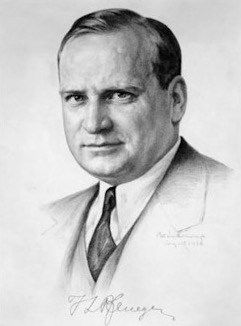
Built between 1927 and 1928, the State Theatre was designed by San Francisco architect Timothy Pflueger and opened its doors on April 7, 1928. It was one of several movie palaces owned and operated by the T&D chain throughout California, a number of which Pflueger designed for the company. The State Theatre was Oroville’s first Spanish Colonial Revival style building, one of only two high examples of the style in the city.
This style of architecture is growing increasingly rare in California. It was originally popular in California and Florida, but with a massive influx of population and the resulting implications to development, many of the original buildings in California were torn down to make way for new construction. Most of the remaining examples are tucked away in smaller communities where development has occurred at a slower rate and older buildings were left mostly intact. The Oroville State Theatre is one such example, but it is also an example of how limited small town resources make restoration and preservation difficult. It is vital that these communities make every effort to save, salvage, and protect these remaining structures.
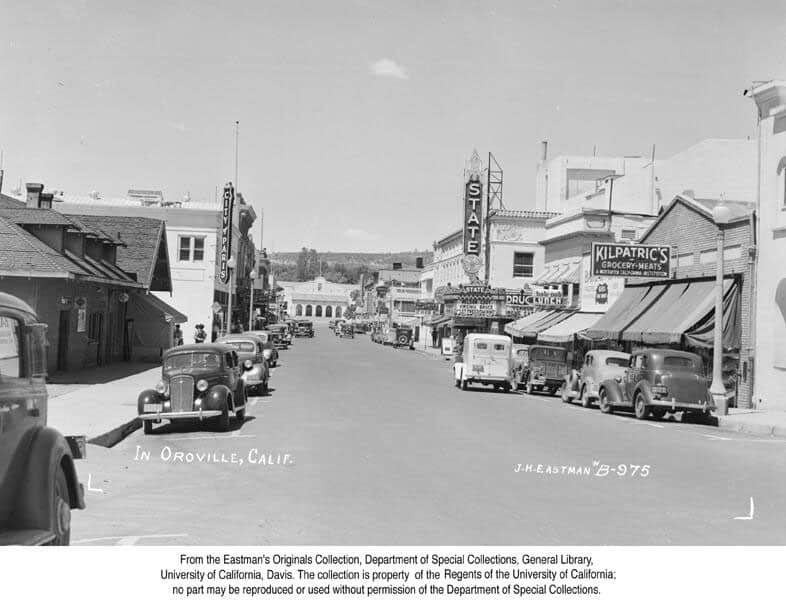
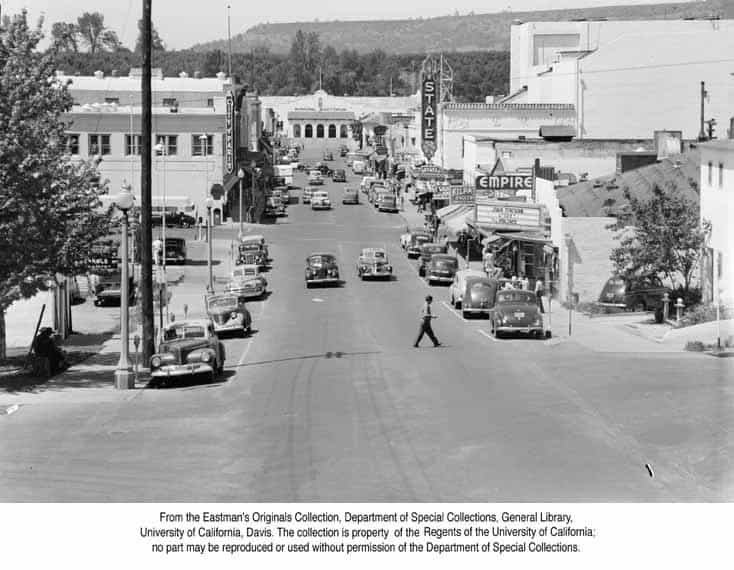
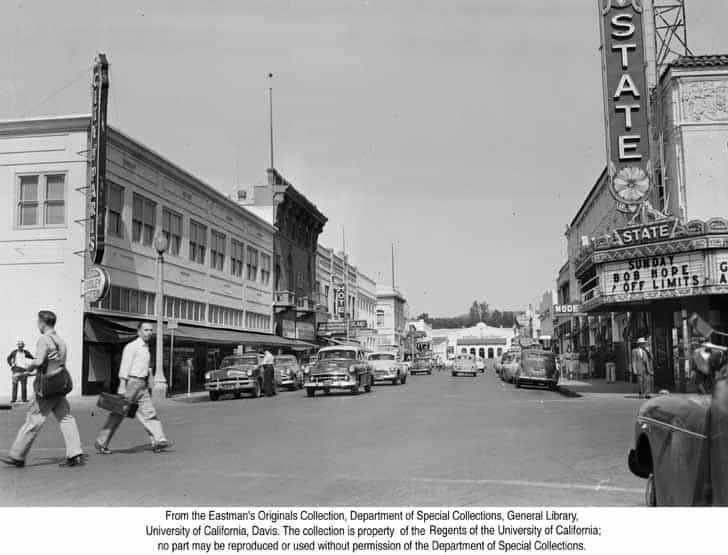
Sadly, much of the original detail and interior finishing of Oroville’s State Theatre was damaged or removed over the years, but “STAGE” is committed to restoring what can still be salvaged and recreating or replacing other aspects of the original art deco architecture and interior design.
The Roaring 20s
The late 1920s were a period of prosperity in Oroville, reflected in a number of major building commissions. Butte County agriculture was in a period of expansion, particularly in citrus farming (hence the use of oranges in some of the theatre’s artwork). The Western Pacific Railroad, serving Oroville, was making improvements to better serve this expansion, and newspapers regularly reported the number of carloads of local oranges being shipped to Eastern markets.
Gold dredging was especially active in the area and would continue to support Oroville’s economy during the early years of the Great Depression, allowing a continuation of building activity into the early 1930s.
The twenty-year debate regarding the location of the proposed Feather River Highway, an all-weather route across the Sierra Nevada, was about to end with the State Highway Commission’s location decision. Construction of this road was anticipated to bring a boon for the local economy. Completion of the highway was expected to bring throngs of visitors and vacationers, requiring new hotels and tourism investment.
It was a time of growth and development. It was a time of prosperity and the State Theatre was at the heart of the city and the hub of commerce. It was a symbol of a bright future and a booming economy.
In Steps the Corporate Movie Theater Chain
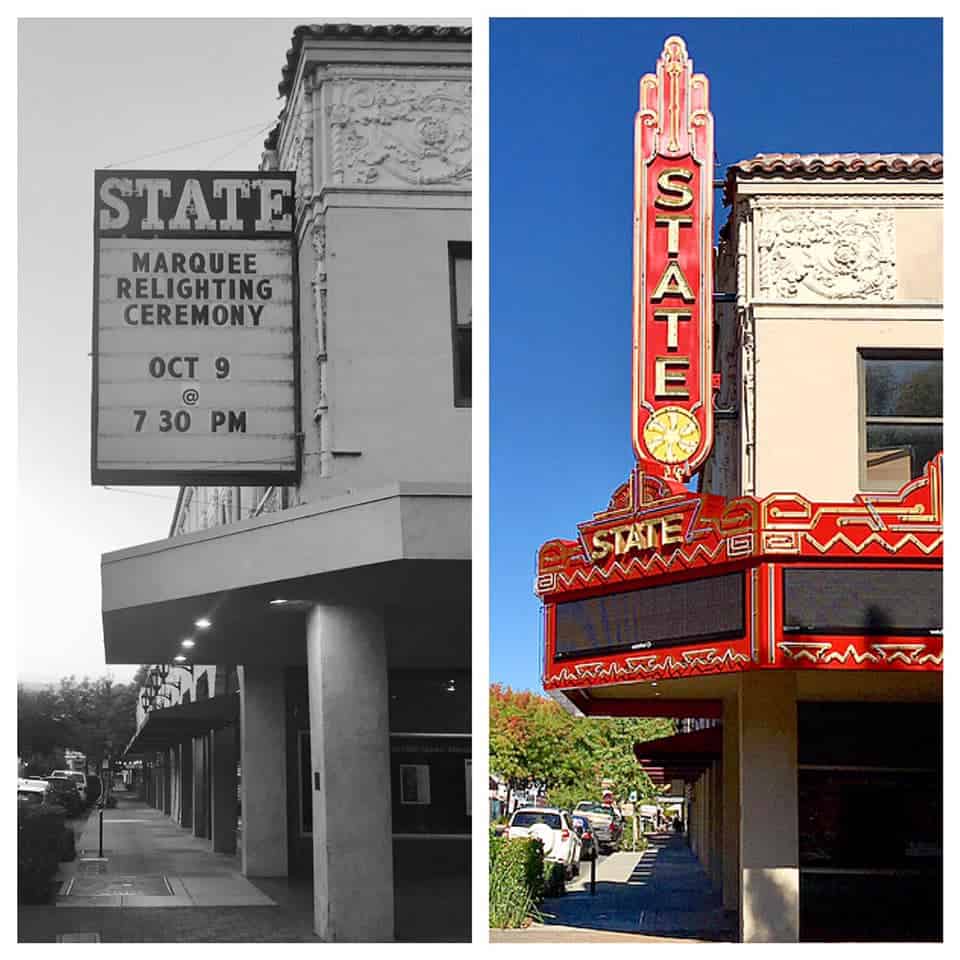
In the late 1970’s, however, United Artists purchased the State Theatre. They planned to operate the theatre as a twin movie house and built a dividing wall running down the center of the auditorium. Though it has since been removed, a scar from this wall can still be seen in the space between seats in the auditorium today. United Artists also removed the vintage neon blade sign and marquee, modernized the entrance, and moved the box office. Tragically, they removed or painted over much of the historic detail of Pflugher’s interior, including removing the original art deco chandeliers.
No respect was afforded to its historic relevance in the architectural history of Oroville, the State of California, or the country for that matter. Yet after all of this, in less than a decade, UA decided to divest themselves of the Theatre and put it on the market.
Birth of STAGE
STAGE was formed back in the 1970’s to bring a performing arts center to the community of greater Oroville. Although the founding group wasn’t initially called STAGE, their intent was the same, to build a performing arts center. They had begun collecting donations from the community, scouting locations, and estimating costs when UA fortuitously announced it planned to sell the State Theatre.
The group approached the City Council and suggested that the City buy the State Theatre from UA with the purpose of turning it into a performing arts center for the community. To help finalize the deal, they contributed the funds they had already raised to the City to be combined with City funds for the acquisition. It worked, and in 1983, the State Theatre was purchased by the City of Oroville. The dividing wall was immediately removed and the State Theatre began its new tradition of hosting performing arts and film for the community to enjoy.
The group soon reorganized officially forming the State Theatre Arts Guild, Inc. (STAGE), then stepped into the role of guardian of both the theatre and the concept of it as the community’s performing arts center in Oroville.
STAGE, From the Sidelines to the Box Office
Over the following decades, STAGE raised funds and conducted supportive projects to purchase equipment and to make improvements to restore the theatre to its original grandeur. In 2007, for example, STAGE was involved and instrumental in writing a grant for the restoration of the beautiful and detailed exterior facade. It’s important to note, however, that these efforts were always in the background, on the sidelines if you will, until January of 2014, when the City of Oroville announced it could no longer afford to support the theatre and planned to solicit an outside commercial company to take over theatre management.
The members of STAGE were alarmed to say the least. An outside company would focus primarily on profits, a model that would likely exclude the local community’s use of the theatre. Confident that they had the community’s support, STAGE decided to reorganize once again and marshal themselves into position to propose to the City that the State Theatre be turned over to STAGE on behalf of the community, and on June 17, 2014, the City Council voted to do just that.
In celebration of this event, STAGE threw a FLASH MOB to commemorate both the City’s decision and the 4th of July! And an army of STAGE volunteers showed up to give the Theatre its first top-to-bottom, in-depth cleaning in years!
Intermission, or COVID19
Over the following six years, the STAGE board, membership, and volunteers carried out their duties managing the theatre to great success.
In addition to full production calendars and a thriving performing arts center, the community rallied with STAGE to make many capital improvements at the Theatre including the restoration of the Wurlitzer Theatrical Pipe Organ and the 1940’s entrance mural restoration by Beate Brühl. Funds were obtained from the DWR Supplemental Benefit Fund to continue the process of renovation and restoration. Negotiations had even begun with the City for STAGE to take over ownership of the building!
Then in early 2020, the world went into lockdown due to the pandemic, the Oroville State Theatre chose to cancel all planned productions for the year. However, an empty production schedule, social distancing, and mask wearing did not deter STAGE from its other mission of restoring and preserving the State Theatre building, and throughout 2020 numerous repairs and capital improvement projects were carried out. This included a brand new marquee and blade sign designed to match the original neon, a full lobby renovation with new art deco lamps, installation of a new rooftop solar array, more repairs to the roof and facade, and upgraded restroom and dressing room facilities.
All of this culminated, in early 2021, in the successful transition of ownership of the Oroville State Theatre building from the City of Oroville to STAGE.
Act II
As with any good stage play, the real excitement awaits in the second act, and STAGE has huge plans for the theatre and the Oroville Community.
STAGE was created as an all-volunteer organization committed to the restoration and preservation of the Oroville State Theatre, the Miracle on Myers Street! Now more than ever, it needs the support of the community. This is an important moment when ordinary people band together to do extraordinary things.
It cannot be done by one of us, or even ten of us. It will take the courage and heart of an entire community working together to make this miracle a reality, and we are such a community.